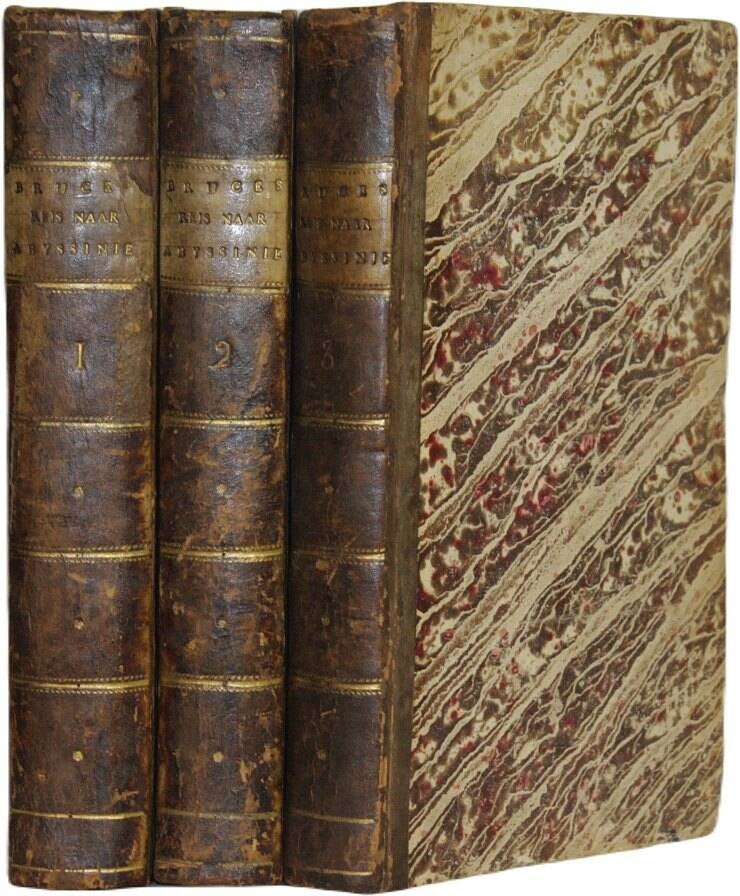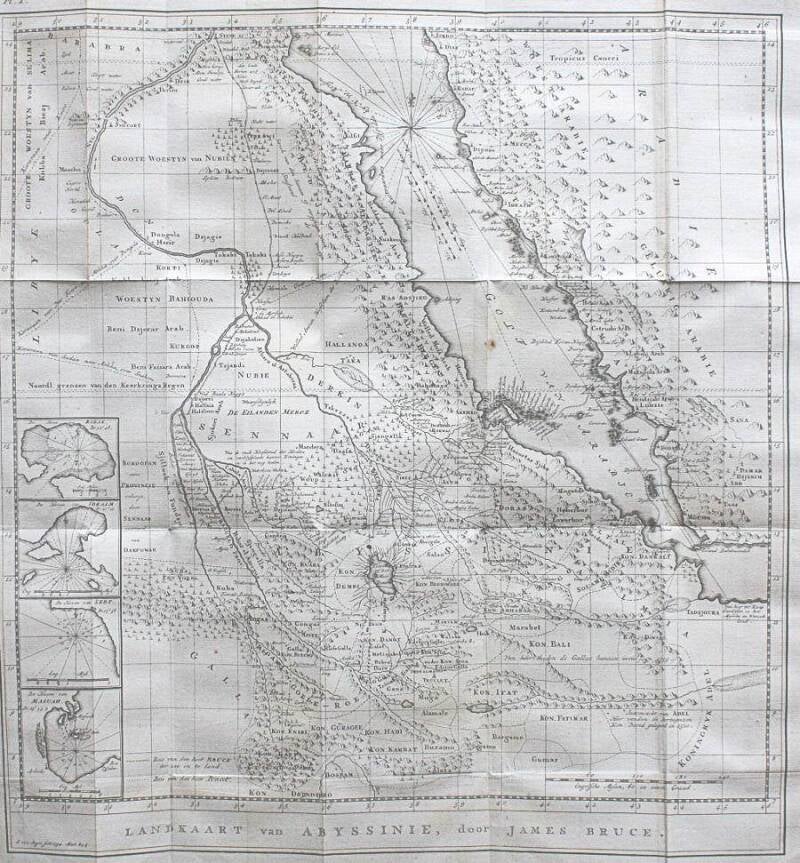antiquarian rare books: travel & exploration,
atlases, maps and others
(internet) antiquarian bookshop
Bronckhorst, Netherlands
mail to Rob van der Graaf
for orders, condition reports etc
worldwide shipping!
visits by appointment only
easy payment with PayPal possible (outside Euro zone)
Hundreds of adventurous travel stories outside Europe,
by land and sea, ego documents,
most in first published edition
and in original or contemporary binding.
recent additions:
Bruce, James
Reis naar Abyssinie, en te rug door de groote woestijn van Nubie, verkort
Amsteldam, M. de Bruyn 1801 first Dutch edition 3 volumes.
8vo, contemporary half calf with wear. (2), xl, xlviii, 525,(1); (2), vi, 528; vi, 439,(1) pages, complete with a large folding map and 6 plates. A nice copy. Rare.
Intent on reaching the source of the Nile River, Bruce left Cairo on an arduous journey by way of the Nile, Aswān, the Red Sea, and Mitsiwa (now Massawa, Eritrea), eventually reaching the Ethiopian capital of Gonder on February 14, 1770. Despite serious political unrest in Ethiopia, Bruce continued his expedition and reached Lake Tana, where the Blue Nile rises, on November 14. The journey homeward was one of extreme hardship. This vivid account of his travels is considered one of the epics of African adventure literature.
€ 1.200
Astrup, Eivind
With Peary Near The Pole
London, C. Arthur Pearson 1898 first English edition
8vo, publisher’s cloth with a blindstamped sledge scene on front board. 362 pages with a large fold-out map (43x22 cm), frontispiece portrait, 5 full page plates and many in-text. Traces of use with spine ends repaired, hinges cracking, owner’s names removed and cut out of title page. A Good used copy of a scarce title.
Translation of “Blandt Nordpolens Naboer” 1895 by H. J. Bull, Polar explorer. Astrup participated in Robert Peary's expedition to Greenland in 1891–92 and mapped northern Greenland. In the follow-up Greenland expedition by Peary during 1893–94 he explored and mapped Melville Bay on the north-west coast of Greenland. Astrup is credited for introducing the combination of dog sleds and skis, which came to revolutionize polar expeditions.
€ 650
Burton, Richard Francis
Zanzibar; city, island, and coast
London, Tinsley Brothers 1872 first edition 2 volumes
8vo, beautiful contemporary half calf, edges marbled. xii, [2], 503, [1]; vi, [2], 519, [1] pages. Illustrated with 14 plates, including frontispieces and three plans. Folding map linen backed. Hardly any foxing. A nice copy.
The book was written while Burton and John Hanning Speke were making preparations for their expedition to solve one of the major geographical mysteries of the nineteenth century the location of the source of the Nile. The pair arrived in Zanzibar in December 1856, and Burton made detailed notes on his surroundings which were developed into Volume 1, which focuses on "The City and the Island", including Burton's journey preparations and arrival. He discusses the significance of the "Nile question". The manuscript on which the book is based, entrusted to an East India Company official for dispatch to the Royal Geographical Society, was initially misplaced, thus delaying publication by twelve years, but enabling Burton to add a chapter on Speke's achievement and untimely death.
€ 3.200






